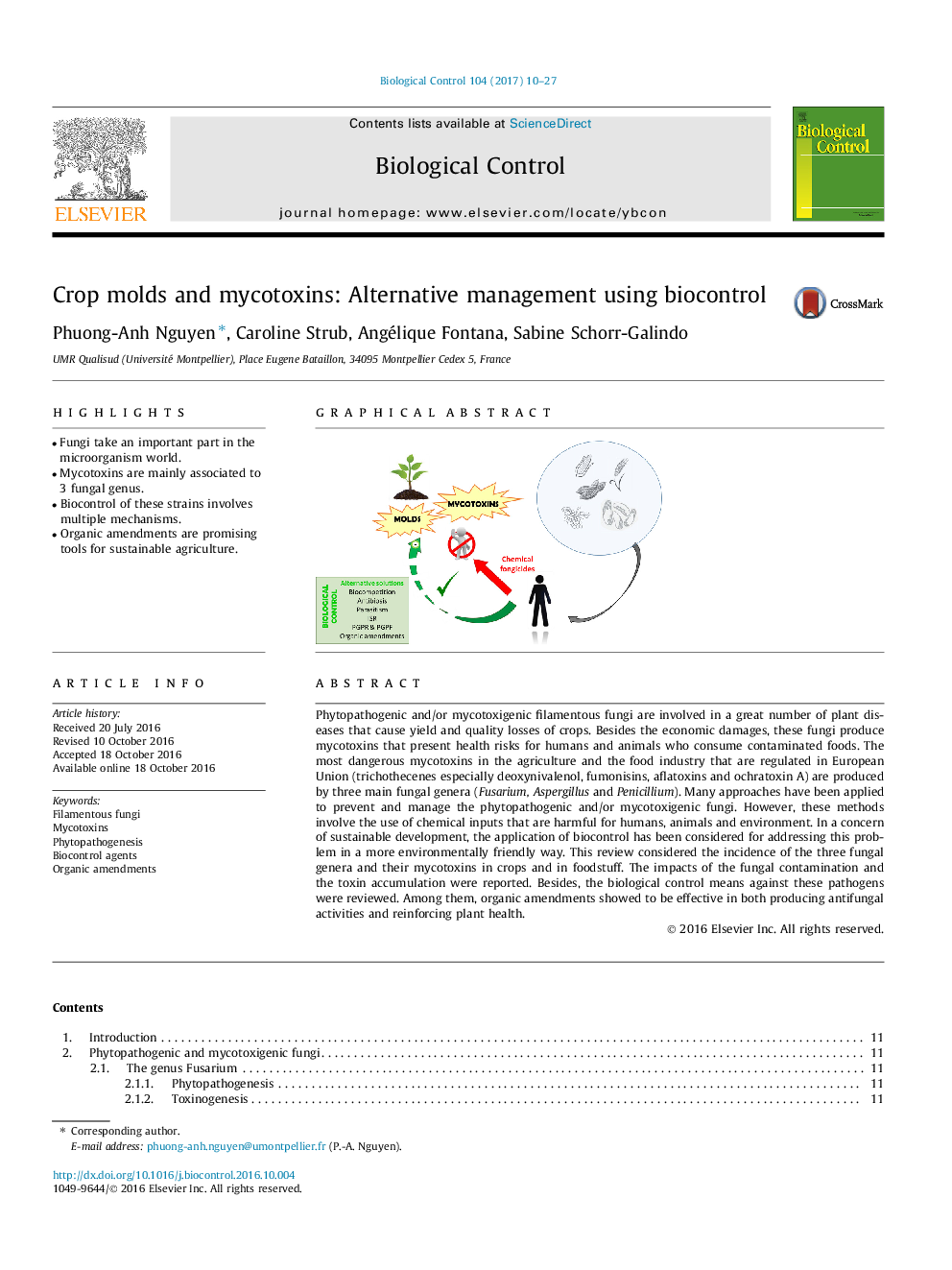| Article ID | Journal | Published Year | Pages | File Type |
|---|---|---|---|---|
| 4503522 | Biological Control | 2017 | 18 Pages |
•Fungi take an important part in the microorganism world.•Mycotoxins are mainly associated to 3 fungal genus.•Biocontrol of these strains involves multiple mechanisms.•Organic amendments are promising tools for sustainable agriculture.
Phytopathogenic and/or mycotoxigenic filamentous fungi are involved in a great number of plant diseases that cause yield and quality losses of crops. Besides the economic damages, these fungi produce mycotoxins that present health risks for humans and animals who consume contaminated foods. The most dangerous mycotoxins in the agriculture and the food industry that are regulated in European Union (trichothecenes especially deoxynivalenol, fumonisins, aflatoxins and ochratoxin A) are produced by three main fungal genera (Fusarium, Aspergillus and Penicillium). Many approaches have been applied to prevent and manage the phytopathogenic and/or mycotoxigenic fungi. However, these methods involve the use of chemical inputs that are harmful for humans, animals and environment. In a concern of sustainable development, the application of biocontrol has been considered for addressing this problem in a more environmentally friendly way. This review considered the incidence of the three fungal genera and their mycotoxins in crops and in foodstuff. The impacts of the fungal contamination and the toxin accumulation were reported. Besides, the biological control means against these pathogens were reviewed. Among them, organic amendments showed to be effective in both producing antifungal activities and reinforcing plant health.
Graphical abstractFigure optionsDownload full-size imageDownload as PowerPoint slide
